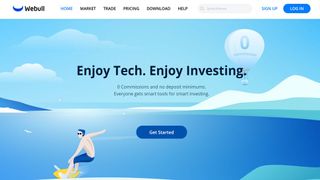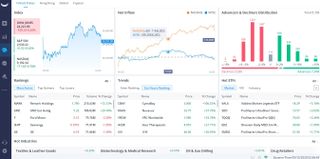Commission-free brokerage Webull launches desktop platform
Webull desktop app allows company to compete directly with likes of Robinhood, TD Ameritrade, and Schwab.

Commission-free trading provider Webull has announced the release of its new desktop trading platform.
The broker’s desktop app builds on its existing platform by offering dozens of widgets that traders can use to trade shares, analyze price data, and monitor market news, and follows closely on the heels of updates to Webull’s popular mobile app and the broker’s introduction of commission-free options trading in March.
Webull launched in 2018, but in just three short years it has gained a following of more than 11 million users. From April to June, in the midst of the coronavirus-driven stock trading frenzy, the brokerage registered an additional 450,000 trading accounts and the platform saw a nearly five-fold increase in trading volume.
- Read our full Robinhood review
- Robinhood recently surpassed 13 million users
- Coronavirus stimulus checks were used to buy stocks
Taking on traditional brokers
Notably, Webull has built this following in part by trying to attract users from Robinhood, its closest competitor in the commission-free trading space.
Webull offers a similar range of assets for trading and differentiates itself by providing traders with advanced price charts and technical analysis tools. It is also planning to roll out cryptocurrency trading to better compete with Robinhood on an additional front.

One of the key motivations behind Webull’s desktop platform reboot is to expand its competition from Robinhood to traditional brokers like TD Ameritrade and Charles Schwab.
These more established players offer rich desktop platforms and have transitioned to commission-free pricing structures to better compete with upstart brokers like Webull.
Are you a pro? Subscribe to our newsletter
Sign up to the TechRadar Pro newsletter to get all the top news, opinion, features and guidance your business needs to succeed!
With a more robust multi-platform trading system, Webull is positioning itself to capture new traders who want a comprehensive brokerage experience.
- Find the best stock trading platform
Michael Graw is a freelance journalist and photographer based in Bellingham, Washington. His interests span a wide range from business technology to finance to creative media, with a focus on new technology and emerging trends. Michael's work has been published in TechRadar, Tom's Guide, Business Insider, Fast Company, Salon, and Harvard Business Review.

